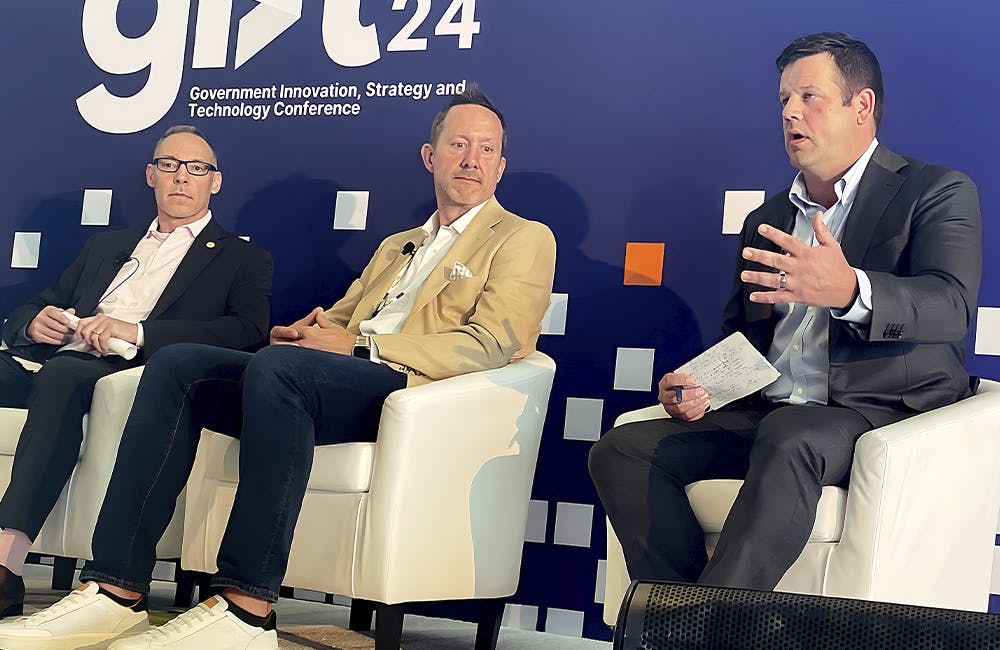Top VHA Leader Promotes Workforce Diversity Amid EHR Transformation
The agency wants its workforce to be ready and trained as it integrates new technology.

The Department of Veterans Affairs is prioritizing diversity and developing new training programs to increase support for women and minorities across the workforce as the department continues its digital transformation journey in electronic health records and ongoing pandemic response.
Senior VA executive Dr. Carolyn Clancy, who most recently served as acting deputy secretary, said during GovernmentCIO Media & Research’s Women Tech Leaders virtual event that one of the most important qualities in a successful leader is authenticity.
“It’s very, very important to be authentic. You are not trying to be what people expect is a leader because that’s what they’ve seen men or other people do,” Clancy said. “You have to be very, very clear about your values and how this work brings value to the customers.”
Successful leaders must have a clear vision of where they want to go and how they want to get there. While having a vision is vital to success, execution is far more important, Clancy said. To execute a vision, leaders should engage the workforce and integrate them into the solution, promoting a culture of discipline and authenticity.
“A culture of discipline … will actually move this big initiative. The other very important part is constantly emphasizing values,” Clancy said. “It’s very important to be clear about what it is that you value … if people don’t believe your word is worth something, and they don’t trust that you’re doing the best you possibly can and getting a lot of feedback along the way to make good decisions, even great discipline is not necessarily going to get you there.”
When organizations undergo transformational changes, it’s critical that leaders and decision-makers prioritize morale and listen to feedback from their workforce. By empowering staff and taking ownership of outcomes, organizations can become an “unstoppable force,” Clancy said.
Technology is a critical component of transformation and enables VA to deliver services for veterans. Clancy, who as acting deputy secretary had been leading the EHR program over the past seven months, unpacked VA’s Electronic Health Record Modernization (EHRM) program as an example of the ways technology impacts the workforce.
“EHRM is all about standardizing workflows,” Clancy said. “What we’re finding is that we’re going to have to take a very different and innovative approach to training. This is not training individuals. This is training teams because health care is a team sport, so watch this space.”
When organizations are integrating technology and driving transformational change, it’s important to understand that these new solutions are supporting the workforce that is driving the mission as opposed to creating barriers that hold them back.
“Technology should be an accelerator of momentum. It is not the momentum itself,” Clancy added. “The technology itself shouldn’t be such a glittering object that we all get distracted by it.”
While VA was well positioned to respond to COVID-19, the pandemic expedited the department’s delivery of services and solutions for veterans. One example is VA’s ability to rapidly ramp up telehealth services, increasing virtual visits by 1,700%.
“It’s a very different way of doing business, and it is surprising how much you can do virtually when you have no other options,” Clancy said. “No one had any experience with a public health emergency that’s lasted 18, 20 months and so forth, but we had a very strong foundation there.”
With more than 300,000 employees at VA, Clancy said the most successful way VA’s workforce delivers on its mission is by listening to veteran feedback and gauging their perspectives. Clancy has been working to build trust with the veteran community to ensure they are heard and understood.
“Medicine is both evidence and people’s beliefs. Listening to veterans’ voices has been a very powerful agent for change,” said Clancy, who has been a general internist and health services researcher prior to joining the agency. “If a veteran says to us, ‘This is what I need and want, and what I can’t get,’ it really cuts through a lot of competing ideas and rigorous debates to say, ‘Wait a minute, we can do this. We don’t have to over-complexify this.’ That’s been inspiring.”
By bringing in new perspectives and ideas, VA has been able to spearhead innovation and better deliver on its mission, Clancy added.
“Many people from very diverse backgrounds sign up to serve our country. Our mission, our sacred mission, is to make sure that we are serving every last one of them,” Clancy said. “The part I’m very excited about, and why I’m honored to be here today, is really efforts, which I think are renewed with intensity now, to diversify the workforce and the leadership of their workforce.”
This is a carousel with manually rotating slides. Use Next and Previous buttons to navigate or jump to a slide with the slide dots
-

How TMF is Helping Agencies Accelerate Tech Modernization
The program launched a new AI pilot to expedite TMF applications as agency leaders urge more to consider applying for funds.
4m read -

Defense Board to Pitch Solutions for Closing Tech Talent Gaps
Defense Innovation Board members cite need to modernize people management the same way government modernizes technology.
4m read -

How Agencies are Upskilling the Workforce in AI
Federal officials are putting in place new training and education methods to ensure its overall workforce understands the technology.
3m read -

A Prepared Workforce is Key to Cyber Resiliency
Strong training strategies and emphasizing cyber hygiene basics enhance security practices at federal agencies.
2m read








